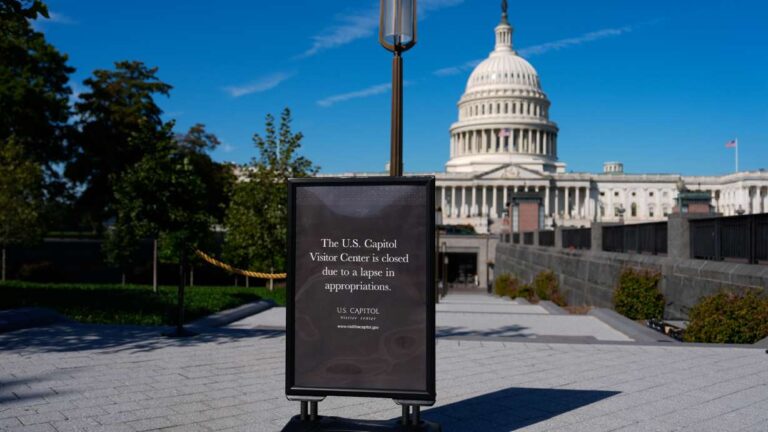Trump Eyes Agency Cuts Amid Ongoing Government Shutdown
In a bold move during the second day of a government shutdown, President Donald Trump announced plans to meet with budget director Russell Vought to discuss cuts to what he referred to as “Democrat Agencies.” This decision aims to apply pressure on his political opponents amidst a standoff in Congress.
In a statement shared on social media, Trump expressed disbelief at the “unprecedented opportunity” presented by the shutdown, showcasing his intent to leverage the situation to his advantage.
Impact on Federal Workers and Programs
As part of his strategy, Trump has already frozen federal funding for transit and green-energy projects in Democratic-leaning states. He has hinted at further layoffs, with an alarming projection of terminating up to 300,000 federal workers by the year’s end. This has raised concerns about the future of federal employment and the services that depend on these workers.
White House spokeswoman Karoline Leavitt suggested that thousands of positions could be cut, but details remain scarce. Several federal employee unions are actively pursuing legal action to halt these layoffs, although courts have permitted the administration to proceed with layoffs as lawsuits unfold.
Congressional Response and Legislative Stalemate
Senator Patty Murray, the top Democrat on the Appropriations Committee, criticized Trump’s approach, emphasizing that further firings will not resolve the legislative impasse causing the shutdown. She stated, “If the president fires a bunch of people, it’s not because of his shutdown — it’s because HE decided to fire them,” highlighting a perceived disregard for the livelihoods of federal workers.
The ongoing government shutdown has led to significant disruptions, halting scientific research, financial oversight, and various other government activities, although major benefit programs like Social Security will continue uninterrupted. Approximately $1.7 trillion in agency funds remains frozen, which accounts for nearly a quarter of annual federal spending.
Federal Employees at Risk
With about 2 million federal workers facing delayed pay, the situation is increasingly precarious. Roughly 750,000 employees have been placed on unpaid leave, while essential personnel, including military troops and Border Patrol agents, are required to work without compensation. If the deadlock persists beyond mid-October, many workers could face financial hardship when their next paychecks are scheduled for issuance.
Potential Consequences of the Shutdown
A prolonged government shutdown could have far-reaching ramifications, potentially jeopardizing air travel, disrupting food assistance for millions, and affecting mortgage applications and exports. The current standoff, which marks the 15th shutdown since 1981, follows a previous record of 35 days in 2018-2019.
Conclusion: The Path Ahead
The shutdown began at midnight Tuesday, following an inability to reach an agreement on a spending bill before the new fiscal year. While Democrats demand that any funding bill includes an extension of health subsidies, Republicans argue these matters should be addressed separately. The shutdown will likely endure until at least Friday, when the Senate reconvenes to tackle the issue. With Republicans holding majorities in Congress, a resolution requires bipartisan cooperation, including support from seven Democrats, to advance any funding bill.
As the situation evolves, both sides express continued concerns over the impact of the shutdown on ordinary Americans, with Democrats accusing Trump of hostage-taking and Republicans asserting their authority to prioritize federal spending. The coming days will be critical in determining the effects of this political standoff on federal operations and employee livelihoods.
